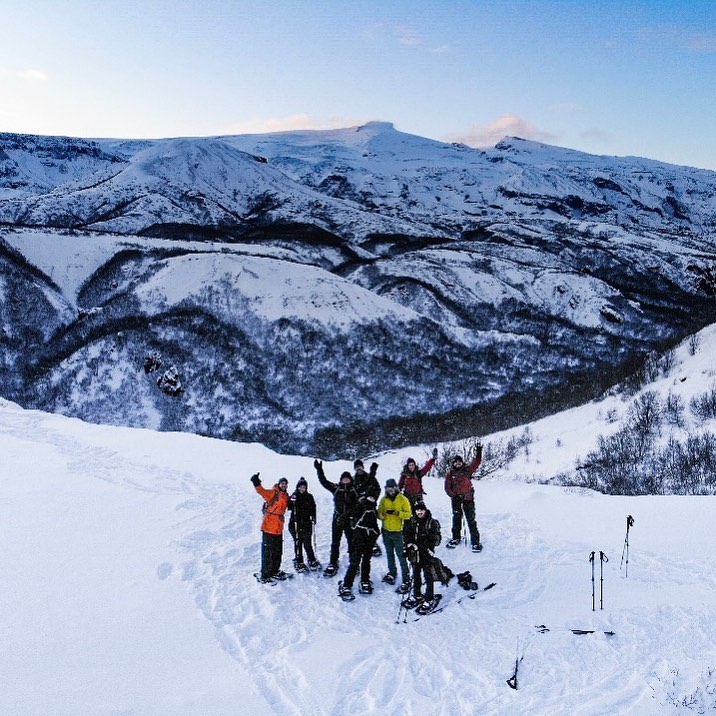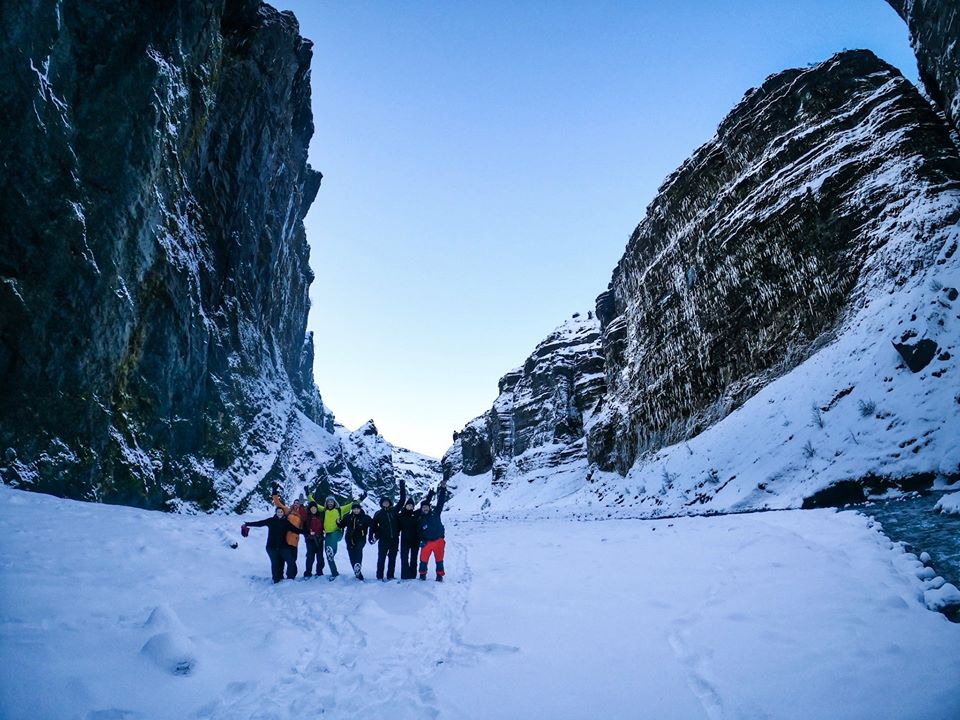Stretching for around 460km from the Reykjanes Peninsula to Höfn in the east, the south coast of Iceland is a kaleidoscope of natural forces. Here, the mountains have scars from ancient times when ice used to carve their walls. The black sediment from glacier retreat covered by the recent snow creates vast landscapes that look like deserts with no end.
Rivers filter through porous lava fields, finishing in crashing, almost unimaginable waterfalls, and massive drifting icebergs appear to be black, white and blue.
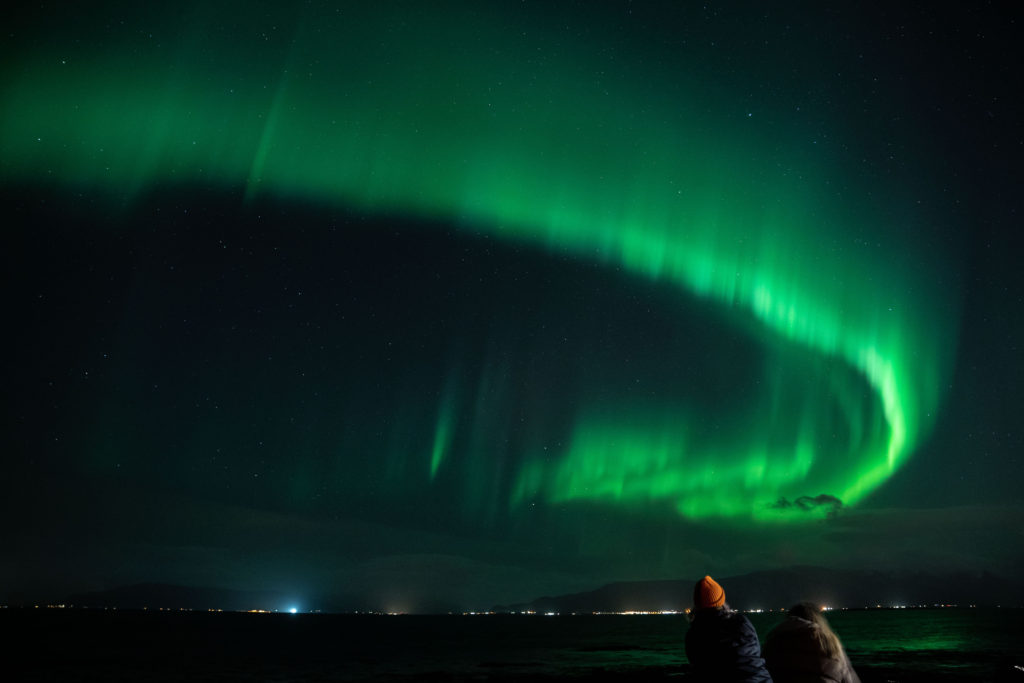
The south coast offers not only a palette of natural phenomena, but a chaos of human emotions, from the isolation of being totally alone in the middle of a blizzard, to the joy of seeing the dancing spirits of the Valkyries, the northern lights, scattered across the Arctic sky.
Being in a natural paradise like this, where everything around you is alive, reminds you how small we are as humans. And this is a place that we can proudly call home.
For the last four years, we at Amarok Adventures have been taking travellers to the most remote areas of Iceland. We have shared with them not only trips, but once-in-a-lifetime experiences we won’t ever forget.
© Amarok Adventures © Amarok Adventures
One of our favourite tours is the ‘Volcano Winter Adventure’, which runs between December and April but that only a few people dare to join. Maybe it’s because of the lack of daylight hours (around four hours a day), or maybe it’s because of the freezing temperatures that force us to dig our way out our vehicle every morning from the snow that has fallen overnight.
In any case, for those hardy souls who do join us on the eight-day trip, every day brings a totally different adventure – and one that we all end up loving. This is just a flavour of what to expect.
We close the doors of our 4×4. The engine has been running for a while already, but the wipers are still frozen and stuck to the front glass. Fortunately it will be a sunny day, and despite leaving in the darkness (at 09.30), we know we are not going to need them at least for a couple of days.
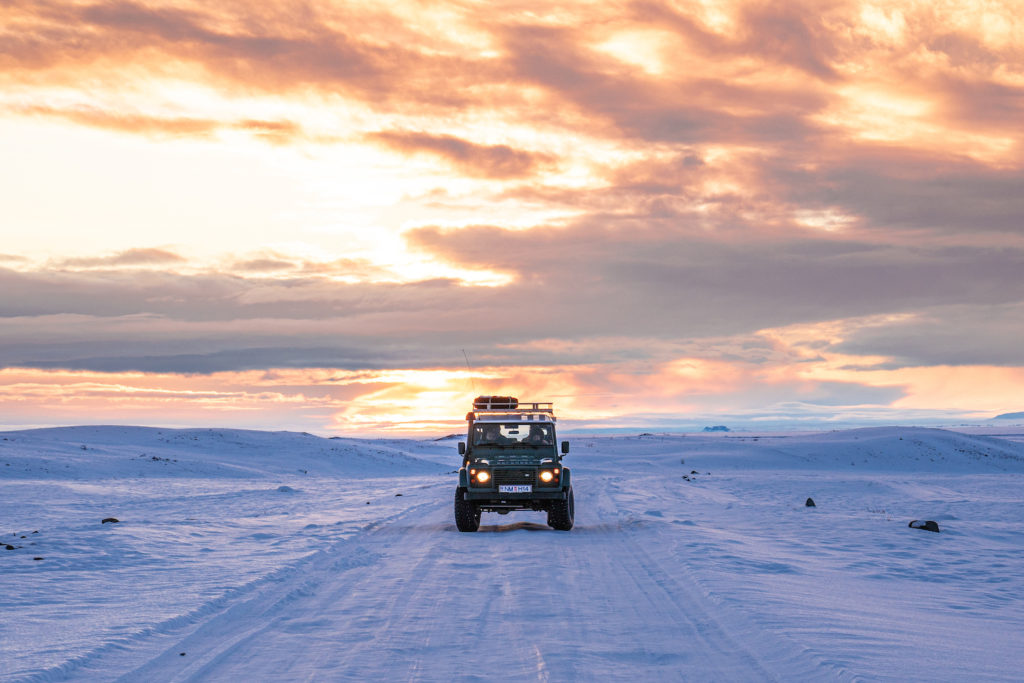
Our first destination is Thingvellir, the country’s oldest national park. No other place in Iceland feels so solemn and ancient, and it is the colour and mood of the place that make Thingvellir one of the country’s most visited natural attractions.
But we are looking to beat the crowds, taking a little-known trail through a deep, dwarf birch forest to reach the stunning Öxarárfoss waterfall. Fir trees engulf us every which way we turn, but at least today there is no ice on the path – on many previous occasions we’ve had to don our snowshoes to make it through.
We continue along a narrow trail that leads us to the Langistígur, a rocky path that might be familiar to the most eagle-eyed Game of Thrones fans. The route is nicknamed the ‘Walk of Death’ because, back in the 13th century, those sentenced to death would clamber along this path before being beheaded and hanged.
Eventually, we reach magnificent Öxarárfoss, which tumbles between volcanic rock and is partially frozen during the winter months. This is just the first place on our journey that leaves us speechless.
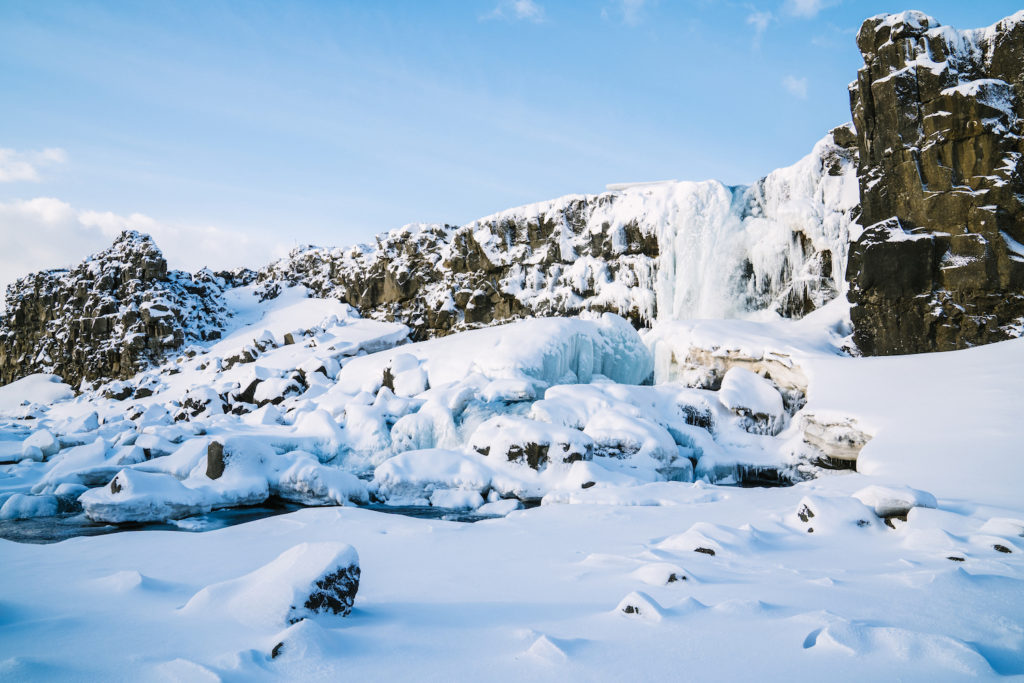
The following days are a mix of raw nature and undiscovered sites: a deep lava cave, and an old wooden ship buried in a black-sand beach where we hear tales from local guides of the adventures of the sailors that once sailed the rough Arctic sea, trading with goods from the continent. History and nature are always intertwined in Iceland.
On day four we arrive at Vatnajökull, the largest glacier in Europe that hides one of the world’s most active volcanoes in recent years. It’s a popular tourist destination, but only a few people know that the vast wastelands surrounding the glacier tongues were once an orchard full of life. At least ten such ‘outburst floods’ (when a massive amount of melted ice descends from inside the glacier dragging rocks, ash and sand with it) happened during the 19th century, covering everything with glacier sediment and creating a totally uninhabitable area.
We head into the glacier to find what’s known as ‘The Wall’: the front part of Breiðamerkurjökull glacier. Here, we go in search of a true secret: a small hole in the ice where, using proper equipment, we descend into a blue ice cave, surrounded by frozen walls that seem to be made of a thick blue glass. Some years these caves are extremely long and others they are very short, but what is for sure is that they do not last from one winter to the following.
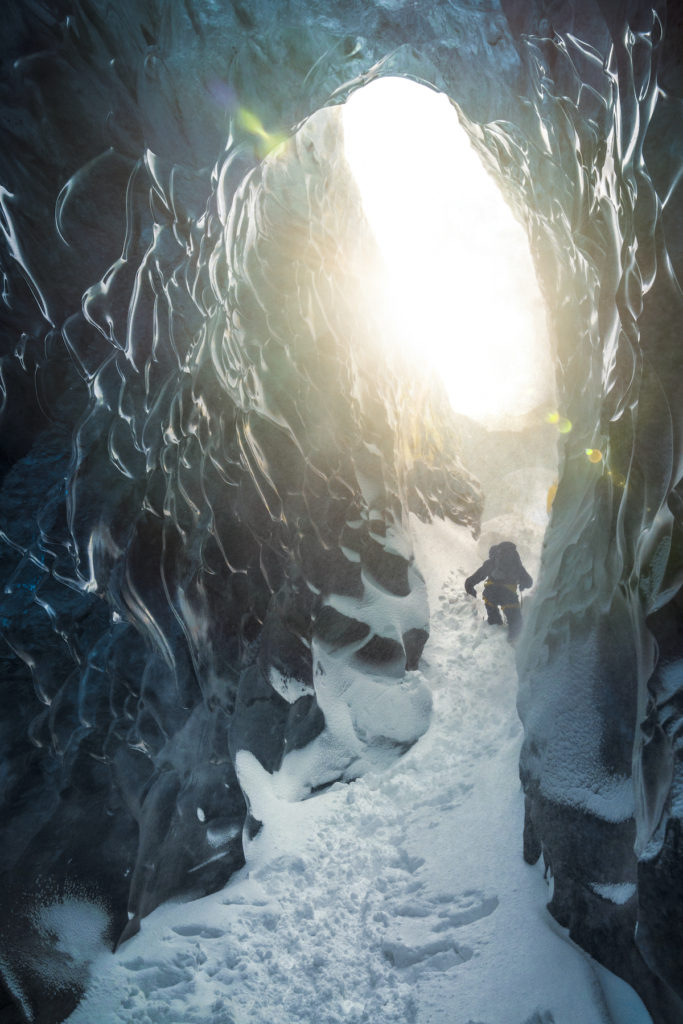
In the most accessible caves, the terrain inside is made of sand, ice and rocks. But we don’t bother with these; instead, we hike for a couple of miles across the glacier to those not visited by others, descending into them using ropes and even crawling below the ice. The end view is worth the effort though – thick blue walls of crystal-clear ice, with frozen oxygen bubbles inside that appear fragile but are in actual fact as solid as concrete. And we have them all to ourselves.
While we are exploring the caves, a weather alert pops up on our phones: a huge storm will arrive the following day. This is common in Iceland during winter, and we’re used to hazardous situations. That’s why, after some discussion, we decide to leave earlier than usual to reach our next destination safely: Thórsmörk in the Highlands.
One of the last truly wild places on the island, the Icelandic Highlands roads are normally marked as impassable from late September to the beginning of the summer season, so only large 4×4 vehicles and experienced drivers can venture into these lands. We definitely don’t want to get stuck here during a storm.
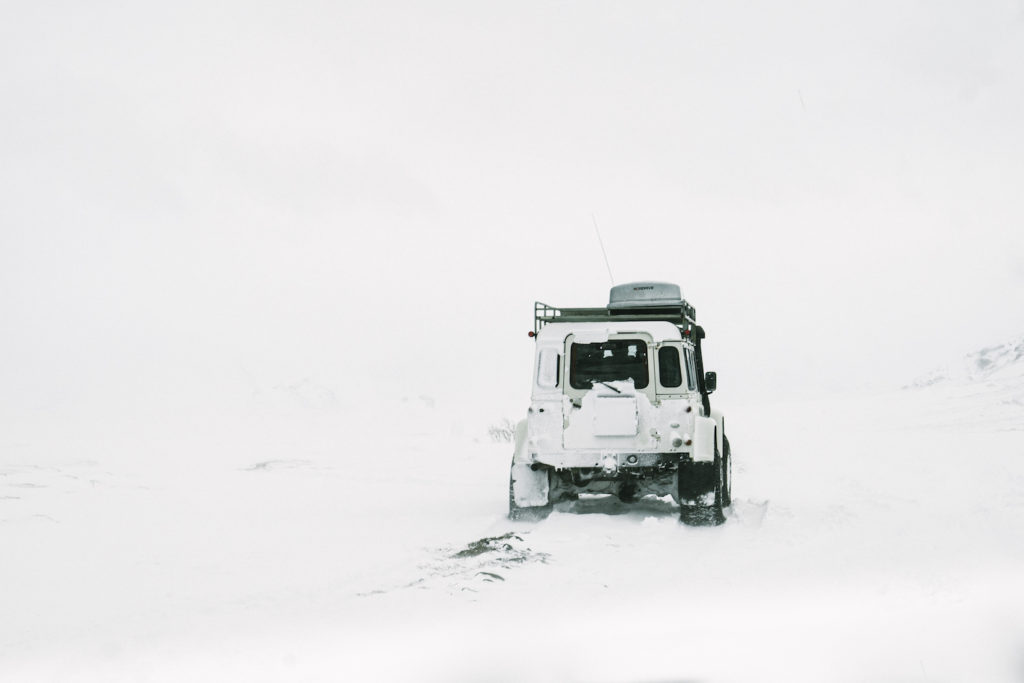
We have only a few hours before it hits, but on our way to Thórsmörk we find a car stuck in the ice, and so stop to help. But while we’re trying to dig them out, the fog descends to cover everything around us, and the blizzard starts. We look at our phones: the storm has been upgraded from ‘Yellow-Orange Alert’ to ‘Red Alert’. We’re stuck.
After more than 11 hours inside the vehicle, we manage to leave the mountain track and follow the concrete road, passing empty abandoned cars and ICE-SAR teams trying to help those stranded. Finally, we arrive safely in a small town called Hvolsvöllur, where we spend the night. In the morning, the bright blue, clear skies show no imprint of the terrible storm before. But this is Iceland: land of the unexpected.
We jump into our vehicles, deflate the tires, set the 4×4 traction, put it into the gear, and start driving to the Valley of the God of Thunder, aka Thórsmörk. Once in the Húsadalur area, and after crossing the Krossá river, we hop out of the jeep and start our slow snowshoeing ascension through a beautiful forest of dwarf birch trees.
The snow covers almost every branch, but once we reach the top of Valahnúkur, a 458m-high peak composed of hardened volcanic ash known as tuff, we see what have been waiting for the whole trip: the magnificence view over Eyjafjallajökull and the Goðaland mountains.
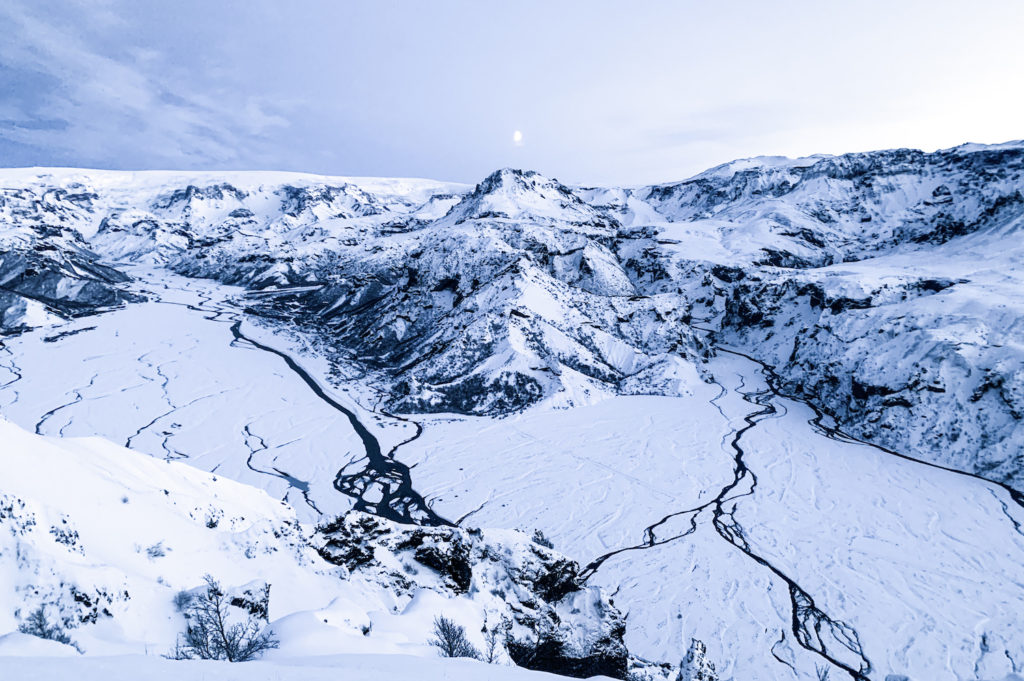
From the top, we have a sensational view of the infamous volcano that caused so much chaos in 2010, completely covered by snow and with the glacier tongues falling through the mountains. We hear the distant crack of the ice on the horizon, and marvel at the snow-covered valley below us, its rugged mountains carpeted with forests, where hundreds of tiny rivers take the glacier water from the ice cap to the sea across the white flat valley. The sky starts to darken again as clouds appear, and the last sun flares illuminate the valley – it is time for us to head home, but with a great joy inside us.
Wild, remote and savage. That is how we’d describe Iceland. But this is our home, and we are proud of it.
More information
Discover more of Iceland’s natural wonders with our guide:
